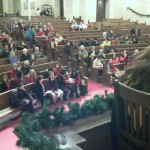 | 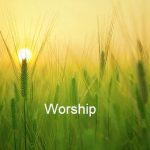 | 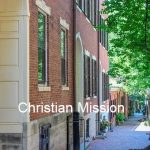 | 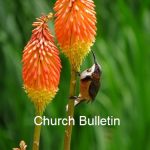 | 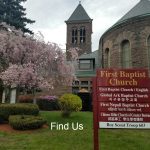 |
Barbara Tolstrop recently gave us a book for our historical collection in our Corey Room. It is volume five of the Register of the Malden Historical Society (1918), which contains two articles of interest to our Church. The first is “A Walk up Salem Street” by Deloraine Pendre Corey, and the second article is “The Early Baptists of Malden” by George Chamberlain.
Mr. Corey was President of the Malden Historical Society in 1899 when he gave this address at the Faulkner School. He was looking back as a boy 50-60 years ago. The remembered time is about 1840. We have condensed, and taken some liberties in editing.
“We begin our walk on Baptist Row (now Salem Street) at the home of my childhood where the great high school now stands. The street is Baptist Row, so called because the First Baptist Church was gathered in a barn, which stood on the north side of the road, where Mr. Davenport’s house now is, and because most of the people who lived in the vicinity were Baptists.”
“The old Baptist meeting-house was an uncouth barn of a house with immense windows and a squat belfry in which hung a bell which rang the curfew at nine o’clock. This house was built in 1804. In it were received my first Sabbath-day impressions; and my earliest recollections thereof are of three conditions: 1.) One of exquisite uneasiness, for the day was hot, the seat was hard, and the sermon was long. 2.) One of awe at the presence of the Minister, Mr. Williams, and the contemplation of the way he pounded the Bible. 3.) One of curiosity as to whether the sighs and groans, which came from the gallery were from a suffering baby or a dog. I was inclined to the first, but have since learned that it was a double bass viol.
“Uncouth as was this old meeting-house, it was endeared to many by loving memories. It was closed in a blaze of glory by a ratification meeting in the days of (Pastors) Clay and Frelinghuysen, when each little square of glass held it’s own candle, and the great chandelier with its glittering pendants shone as it never shone before. The house was crowded; and the eloquence of a brass band graced the occasion. Then spoke the celebrated Rufus Choate, perhaps in some respects the most eloquent man Massachusetts has produced. He was suffering from a cold and spoke but a short time. One who followed him said that after such a speech, his own poor words would be like the rattling of beans in a tin pan compared with old fashion dog-day thunder.”
“The old meeting-house was put on rollers and the last I saw of it, was being pulled by oxen, going up Reading Road (Main Street). Still standing were a vestry and a hearse house, both painted yellow.”
Mr. Corey describes in detail the local rivers, ponds, and local farm-land and notes that in 1846 there were only 779 children entitled to school privileges in the whole town of Malden, including the present cities of Everett and Melrose.
A Trip to the Corey Room in Search of the First Annual Meeting Records
We can be quite sure that there was no annual meeting in early 1803 or 1804. The church was not incorporated until 1820. This corporation was empowered to hold property, in the amount of $ 20,000, and to lease or sell pews. Also, any new member was required to pay his share of the assessment, which of course applied only to male members (*Chamberlain, 1918). Perhaps there was a meeting in 1821, but we find no record of it. There are many records of the members, elders, ministers, and some orders of worship for special occasions in the Corey Room.
Printed records were found of a Treasurer’s Annual Report of the First Baptist Society of Malden, April 1st, 1885. By 1887, this record included appropriations voted at the Society’s Meeting April 1, 1886. They listed for pastor’s salary, $ 2,000, for music and incidentals, $ 1,000, and contingent expenses, $ 1,000 ( $ 4,000 total). Actual expenses were $ 4,569.44, with the pastor receiving only $1,000.04. The major source of income was pew rentals ($ 2,662.93). The balance on hand was $ 195.06, and liabilities were $ 2,735.83. There was a Church improvement fund of about $ 800, and they carried insurance of $ 20,000, including $ 1,000 on the organ.
Also, at about this time a booklet was printed by A.G. Brown, Steam Book and Job Printer (Malden, 1882), entitled “A brief History of the First Baptist Church, Malden; The Declaration of Faith; The Church Covenant; and a List of Officers and Members.” In the 14-page history there is a record of a meeting of 42 persons, who met in the house of Mr. Phillips and chose Mr. Dyer as clerk. The date was December 27, 1803, which is the date we now celebrate as our anniversary. A committee was appointed to call a council, such that “the new church might be in fellowship with the surrounding churches. The Council was composed of delegates from the Baptist churches of Boston, Newton, and Beverly, and convened in the barn, when the brethren and sisters, 42 in number, were duly constituted and recognized as a church. Rev. Dr. Stillman of Boston preached the sermon of recognition.”
At this service William Parker was given the right hand of fellowship on behalf of the new church. Chamberlain (1918) records that Mr. Pottle baptized over 40 persons before the church was organized. in 1803. However, it appears that Elder Pottle was not recognized as the pastor of the church, and he represented himself as “Public teacher of a Religious sect or denomination called Baptist in the town of Malden” in a letter dated March 17, 1804 to Peter Tufts. This is probably because Rev. Pottle held strong Arminian (free will) sentiments, which were considered unsound by the more Calvinistic (predestination) leaders of the Baptist Churches in the area. One of the most interesting early records on this subject is “The History of Wars and Fightings (without shedding of blood) in the Baptist Church of Malden” written by John Sprague in 1812. (More on this next time). more >
*Chamberlain (1918) “The Early Baptists ofMalden” in Register of theMaldenHistorical Society, Vol. 5.
Your comment is welcomed. Thank you.